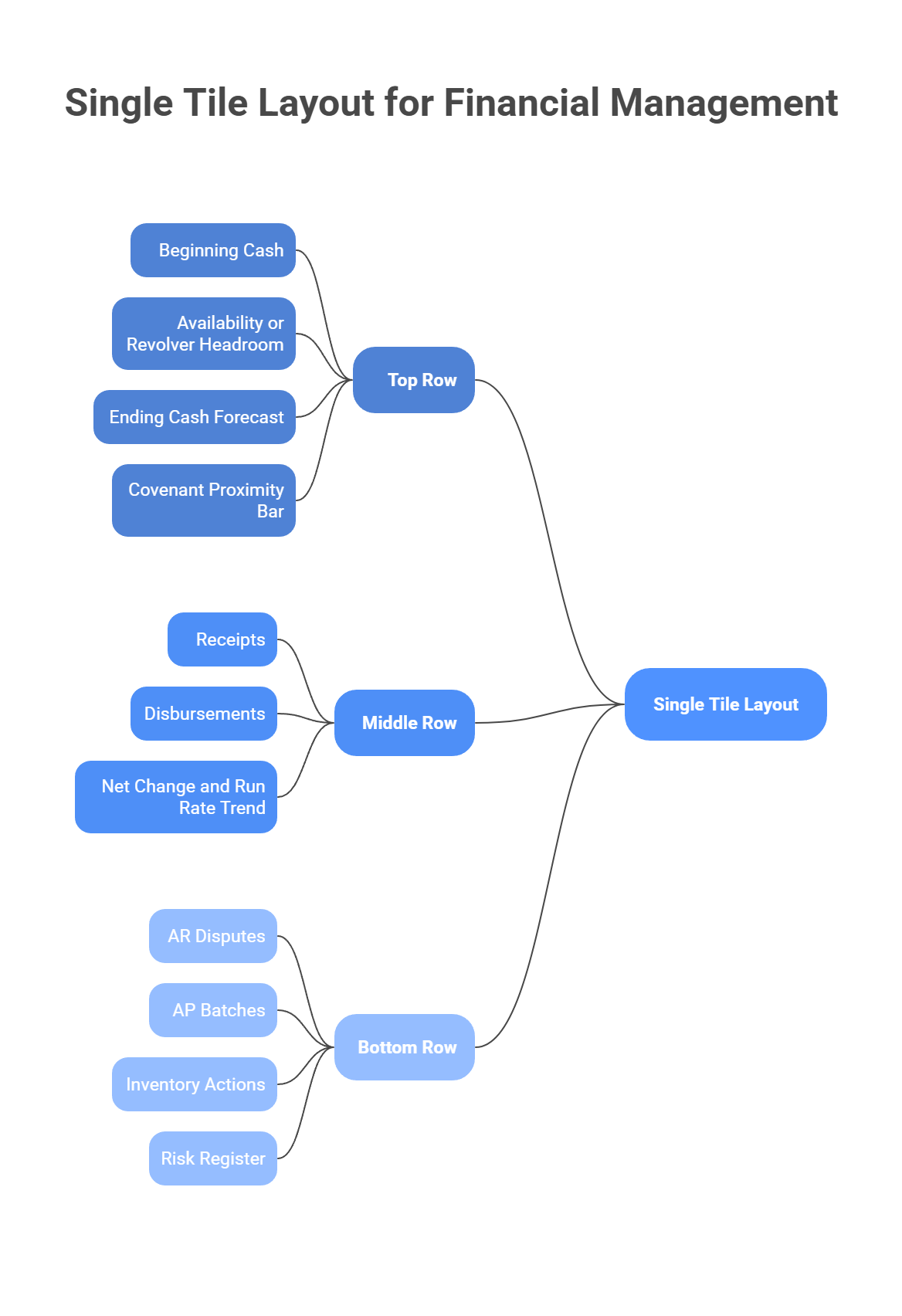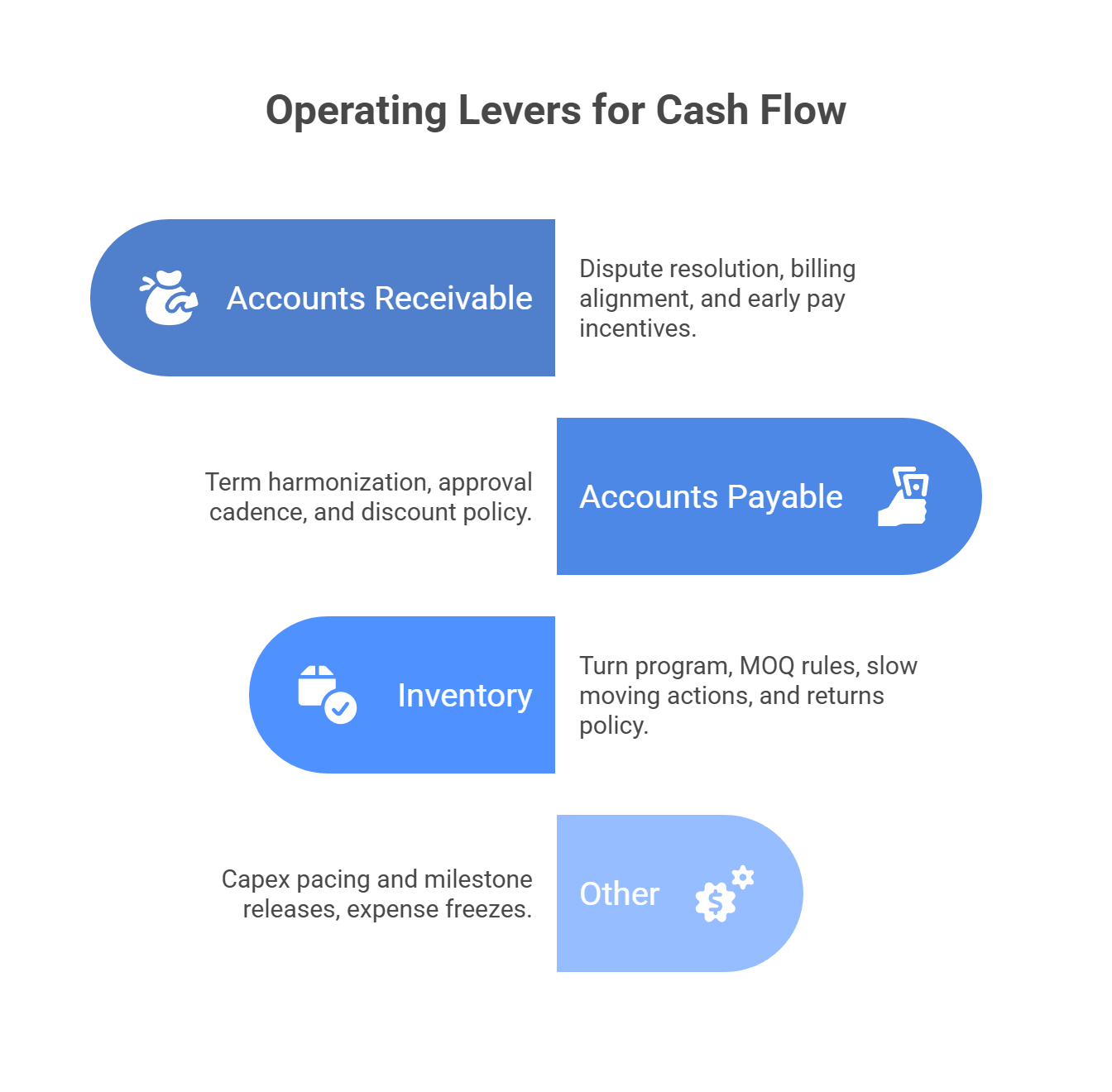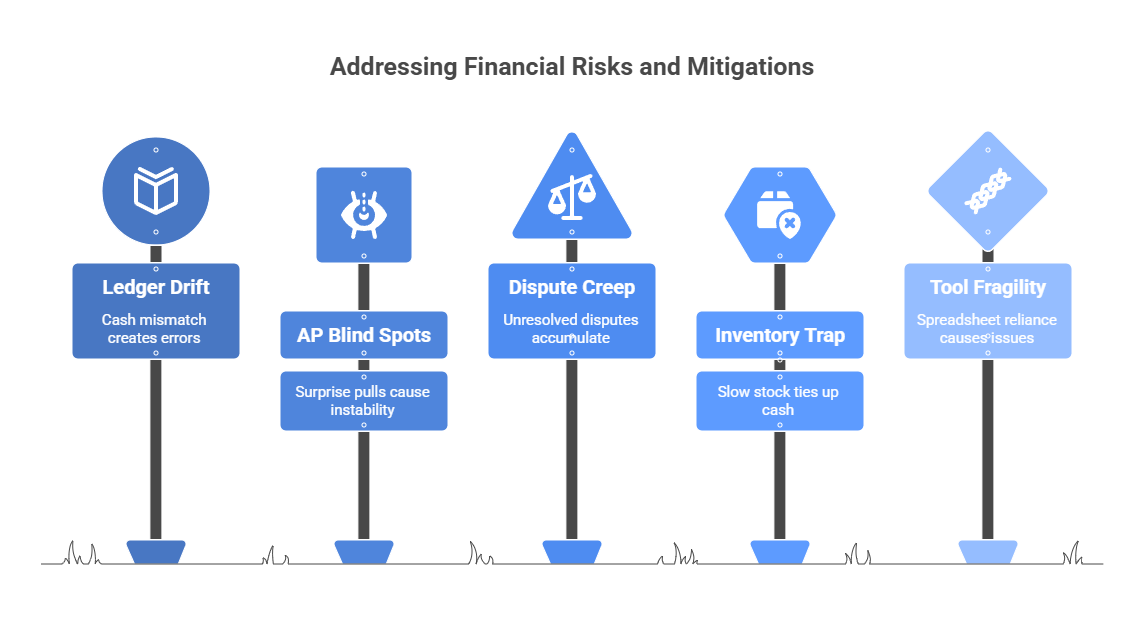13 Week Cash 2.0: A Single Tile Dashboard CFOs Actually Use
Oct 24, 2025
Cash control is an operating system, not a spreadsheet. The goal is a single tile view that the CFO, Controller, and Operating Partner can trust daily. It shows where cash comes from, where it is going, where risk sits, and what must happen this week. The classic 13 week model still works, but only if it is reconciled, variance driven, and governed by a short weekly rhythm.
1. Objective and design principles
-
Preserve time and options by seeing cash early and acting fast.
-
Replace multi tab sprawl with a one tile view and a short agenda.
-
Reconcile to the ledger and bank every week. No silent drift.
-
Assign owners to every variance and close within 24 hours.
-
Archive monthly snapshots so the story travels to lenders and buyers.
2. What good looks like
-
One tile layout: week start cash, receipts, disbursements, ending cash, headroom.
-
Roll forward model that ties to the prior week actual and to the bank balance.
-
Variance table with standard reason codes and named owners.
-
Risk and upside ledger with probabilities and expected cash timing.
-
Links to AR disputes, AP approvals, and inventory actions.
-
Immutable monthly archive and a short readme that explains the math.

3. The single tile layout
Top row: position and headroom
-
Beginning cash
-
Availability or revolver headroom
-
Ending cash forecast week by week
-
Covenant proximity bar and alert
Middle row: drivers
-
Receipts: AR current, AR over 30, over 60, other inflows
-
Disbursements: payroll, COGS vendors, non COGS vendors, taxes, interest, capex
-
Net change and run rate trend
Bottom row: actions and risks
-
Top five AR disputes with owners and target dates
-
Top five AP batches awaiting approval or scheduled
-
Inventory actions on two families and expected cash effect
-
Risk register with probability and expected value
4. Minimal data model
-
Inputs: bank balance, AR aging by bucket and disputes, AP due by vendor and terms, payroll calendar, tax calendar, interest schedule, capex plan, inventory plan.
-
Structure: table with columns [Week, Begin Cash, Receipts, Disbursements, End Cash, Notes].
-
Drivers: receipts sourced from AR current plus expected collections from aged buckets; disbursements from known schedules plus vendor forecast based on run rate and purchase orders.
-
Reconciliation: prior week ending cash equals current week beginning cash equals bank balance.
5. Forecast and variance method
-
Forecast policy
-
Receipts: assume historical collection curve unless an owner commits to a dispute closure date.
-
Disbursements: schedule payroll, taxes, interest, capex by calendar; vendors by due date and approval queue.
-
-
Variance capture
-
Assign one code per variance: timing, volume, price, one time, error.
-
Name an owner and a close date.
-
Variance closure happens in the weekly standup or is escalated.
-
6. Weekly cadence
-
30 minute cash standup, same time every week.
-
Attendees: CFO, Controller, Treasurer, FP and A, Operations.
-
Agenda
-
Review last week actual vs forecast. Top five variances, owners, close.
-
Walk this week and next week forecast. Risks and upsides.
-
AR disputes and AP approvals. Inventory actions and ETA of cash benefit.
-
Decisions needed: term changes, payment holds, vendor prioritization.
-

7. Operating levers that move cash in 30 to 60 days
-
Accounts receivable
-
Dispute blitz on top ten reason codes.
-
Renewal and billing date alignment to reduce late credit notes.
-
Early pay incentive only where contribution supports it.
-
-
Accounts payable
-
Term harmonization and approval cadence aligned to cash calendar.
-
Discount policy limited to ROI above hurdle.
-
-
Inventory
-
Two family turn program, MOQ rules, and slow moving actions.
-
Returns policy and refurb or scrap discipline.
-
-
Other
-
Capex pacing and milestone based releases.
-
Expense freezes that protect revenue lanes.
-
8. Metrics that matter
-
Forecast accuracy by week and rolling two week error.
-
Headroom by covenant and alert when within defined threshold.
-
AR current percent, dispute cycle time, DSO trend.
-
AP days, percent on term, discount capture ROI.
-
Inventory turns in target families and slow moving stock value.
-
Percent of variances closed within 24 hours.
9. Risks and mitigations

10. Templates and artifacts
-
One tile dashboard mock with live links to AR, AP, and inventory sheets.
-
Variance log template with codes and owners.
-
Dispute reason code dictionary and escalation map.
-
Weekly standup agenda and attendee list.
-
Monthly archive checklist with file naming convention and timestamps.
-
Readme that explains the model, the logic, and how to audit it.
11. Exit back packaging
-
Archive the last six months of weekly dashboards and variance logs.
-
Include reconciliation evidence to bank and financials.
-
Show cash unlocked from AR, AP, and inventory with dates and owners.
-
Provide lender packets if used, plus any confirmations of confidence.
-
The test is reproducibility: a buyer should replicate your weekly math in 30 minutes.
12. One page checklist
-
Reconciled beginning and ending cash weekly.
-
13 week view current and variance table closed.
-
AR disputes owned with target dates.
-
AP batch schedule published and approvals in cadence.
-
Inventory actions defined for two families.
-
Covenants monitored with alert threshold.
-
Monthly archive immutable and labeled.
VCII Note and Copyright
TVC Next upgrades the classic 13 week method into a one tile operating system that operators use and buyers can verify. The result is earlier action, fewer surprises, and a cleaner exit narrative.
Copyright © 2025 VCII, Meritrium Corp. All rights reserved.
We have many great affordable courses waiting for you!
Stay connected with news and updates!
Join our mailing list to receive the latest news and updates from our team.
Don't worry, your information will not be shared.
We hate SPAM. We will never sell your information, for any reason.


